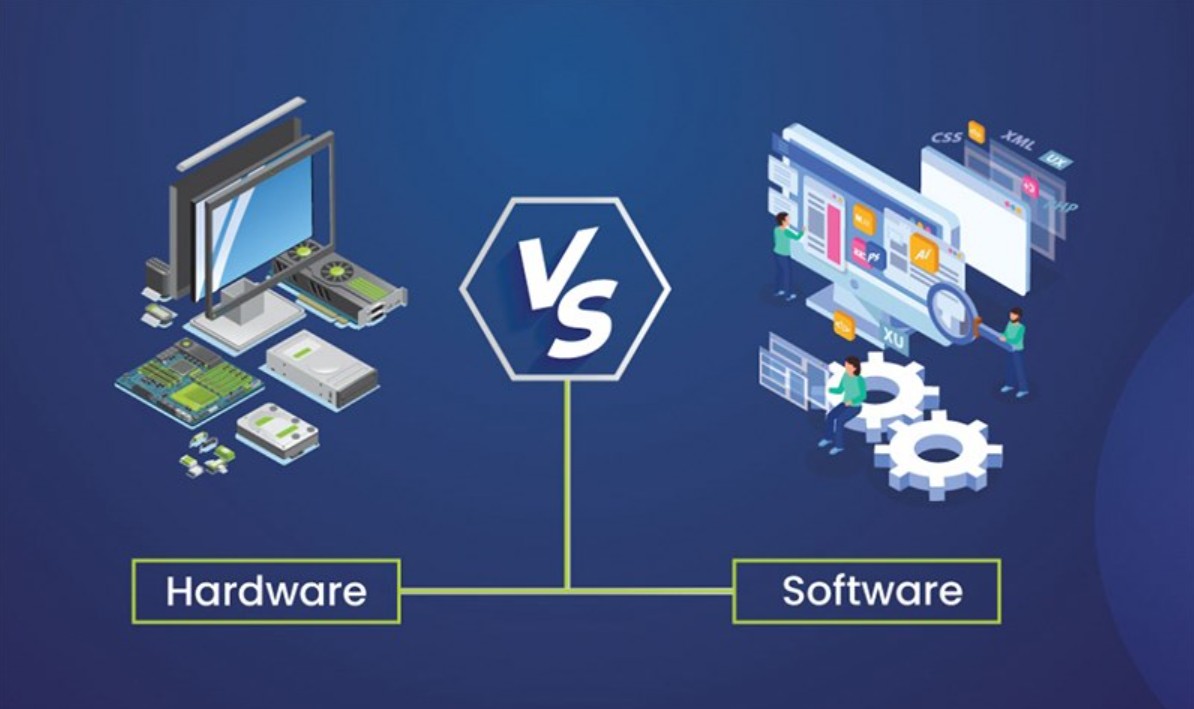Best Selling Products
Exploring the Mysterious Relationship Between Software and Hardware
Nội dung
- 1. Definition and Classification of Two Core Components of a Computer System
- 1.1. Hardware
- 1.2. Software
- 2. Basic Factors That Make the Difference Between Software and Hardware
- 2.1. Physical and Abstract Properties
- 2.2. Functions and Duties of Each Component
- 2.3. Development and Upgrade Process
- 2.4. Impact on System Performance
- 3. The Role and Interaction Between Software and Hardware
- 3.1. Interdependence
- 3.2. Illustrative Examples in Daily Life
- 3.3. The Impact of New Technology on the Relationship Between Hardware and Software
- 4. Practical Application: When Software and Hardware Blend in Design
- 4.1. Specific Application Cases
- 4.2. The Importance of Consistency in Design
Stepping into the world of technology, the article reveals the secrets behind the tight connection between software and hardware, explaining how they work together to create superior performance for modern computer systems.

In today's digital world, computers and electronic devices have become indispensable "companions" in work, study and entertainment. However, few people really understand that behind every modern device is always a complex system consisting of two basic elements: hardware and software. Let's explore in detail the difference between software and hardware with Sadesign, helping you get an overview!
1. Definition and Classification of Two Core Components of a Computer System
1.1. Hardware
Hardware is all the physical, tangible components of a computer system. It is the core platform on which software programs are deployed and run. Without hardware, software would be just abstract lines of code that are incapable of being “transformed” into useful functions.
Main Hardware Components:
Processor (CPU): Is the “heart” of the computer, performs calculations and controls all system operations.
Memory (RAM, ROM): RAM provides temporary memory for running tasks, while ROM contains permanent information needed for the computer to boot.
.png)
Storage Devices (HDD, SSD): Hard drives are used to store data, from personal documents to operating systems and applications.
Peripheral Devices: These include keyboards, mice, monitors, printers, and many other devices that help the user interact with the computer.
1.2. Software
Software is a collection of programs, applications, and data used to operate and manage hardware devices. It is the brain of the system, controlling, directing, and optimizing the operation of the hardware through pre-programmed commands and algorithms.
Software Classification
System Software: Includes operating systems such as Windows, macOS, Linux, along with device drivers. They help manage system resources, coordinate tasks, and ensure smooth computer operation.
Application Software: These are programs that serve a specific purpose such as word processing, image editing, or business data management.
.png)
Embedded Software (Firmware): Usually integrated directly into hardware devices, responsible for controlling specific functions of that device, such as the controller in a printer, router or smartphone.
2. Basic Factors That Make the Difference Between Software and Hardware
2.1. Physical and Abstract Properties
Hardware: Tangibility
Hardware is the components you can physically see, touch, and test. They are manufactured, assembled, and have clear physical boundaries. From the initial feel of a laptop to the complexity of the circuitry inside, hardware is concrete and tangible.
Software: Abstract Code
In contrast, software has no physical form. It exists in the form of code, algorithms and data, which cannot be “touched” but provides the ability to control and process information. The existence of software is only “realized” when deployed on hardware.
.png)
2.2. Functions and Duties of Each Component
Hardware: A Solid Foundation for Operation
Hardware provides the physical infrastructure for software to function. It ensures that electrical signals and data information are processed and transmitted reliably. It is thanks to hardware that computer systems can perform complex computational tasks and store data efficiently.
Software: Controller and Resource Manager
Software controls how hardware works. It not only “instructs” the hardware, but also manages resources, optimizes system performance, and creates a smooth user experience. From running an operating system to handling specific applications, software ensures that hardware is used most efficiently.
.png)
2.3. Development and Upgrade Process
Hardware Development and Upgrades
Manufacturing and upgrading hardware often requires complex design processes, large investments, and long production times. Once a component is manufactured, it is difficult to change or upgrade due to its fixed physical properties. Therefore, choosing the right hardware components from the beginning is a key factor in technology projects.
Software Development and Upgrades
In contrast, software can be updated and upgraded flexibly through patches, new versions or algorithm adjustments. This allows businesses to easily optimize and improve the system without changing the entire hardware structure.
2.4. Impact on System Performance
Hardware Performance Limits
Hardware always has certain limitations in processing speed, storage capacity, and ability to handle concurrent tasks. These limitations can sometimes prevent software from reaching its full potential if not properly balanced.
.png)
The Operational Role of Software
Software determines how hardware resources are used and managed. A well-optimized operating system will help reduce “freezing” or “hanging” and improve the user experience. Intelligent resource management and processing algorithms help the system operate stably and efficiently.
3. The Role and Interaction Between Software and Hardware
3.1. Interdependence
There is no denying that software and hardware are interdependent. Every time you start your computer, the operating system – a piece of software – has to “call” on hardware components such as the CPU, RAM, and hard drive to initialize and operate. If one of these is missing, the system will not be able to function.
3.2. Illustrative Examples in Daily Life
Take a smartphone as an example:
Hardware: Includes display, processor, memory, and sensors.
Software: Includes the operating system such as Android or iOS, along with supporting applications such as cameras, browsers, and social networking apps.
.png)
Thanks to the perfect combination of hardware and software, the phone can not only make calls but also help users access the internet, take pictures, and even handle complex graphics tasks. This clearly demonstrates that the interdependence between these two components is the decisive factor for the success of any technological device.
3.3. The Impact of New Technology on the Relationship Between Hardware and Software
The trend of deep integration between software and hardware is increasingly focused on smart devices. AI (artificial intelligence) and IoT (Internet of Things) technology requires a high level of synchronization between physical devices and processing algorithms. This not only opens up new opportunities for businesses but also requires designers to constantly update new knowledge and technology.
4. Practical Application: When Software and Hardware Blend in Design
4.1. Specific Application Cases
Personal and Business Computers
In the business environment, computers are not only working tools but also information processing centers. The combination of powerful hardware and intelligent management software allows businesses to operate office applications, accounting software and data management systems effectively. This helps optimize work processes and improve labor productivity.
.png)
Smartphone
A smartphone is a prime example of the integration of hardware and software. Components such as processors, memory and sensors are combined with a modern operating system and rich applications, creating a seamless user experience, from communication to entertainment to everyday work.
Embedded Systems and IoT
In the era of the Internet of Things (IoT), embedded devices such as printers, security cameras, and smart sensors are increasingly integrated into life. The harmonious coordination between specialized hardware and control software helps these devices operate effectively, contributing to the construction of smart cities and automatic management systems.
4.2. The Importance of Consistency in Design
Designing a successful technology system is not just about the quality of individual hardware or software, but more importantly how they work together. An optimal design solution requires:
Compatibility: Choose hardware and software that work together to ensure stable operation and high performance.
Scalability: The system needs to be easy to upgrade and expand as usage needs increase, ensuring project sustainability.
Economic Efficiency: Consider the initial investment cost and the ability to save and optimize operating costs in the long term.
In this blog, SaDesign has delved into every aspect of hardware and software, from definition, classification to how they work and interact. Through that, you have a comprehensive view, not only helping to improve your understanding of technology but also being a source of inspiration for creative and effective design projects.












































